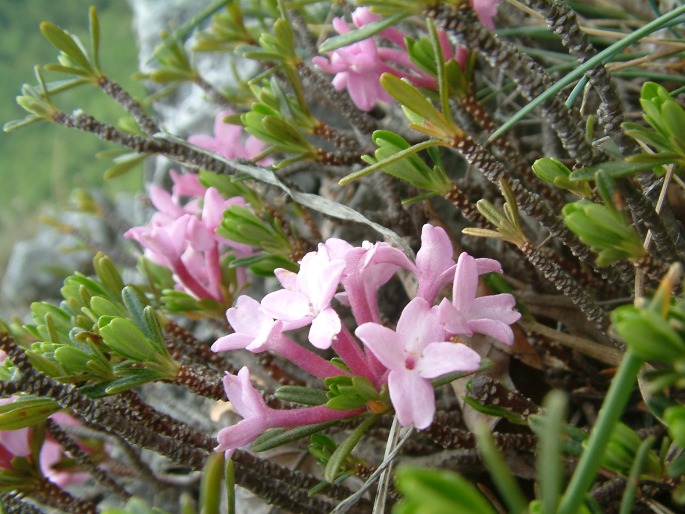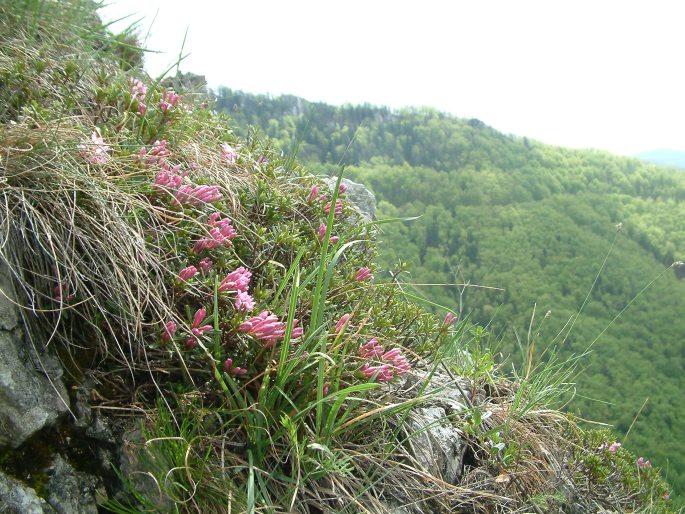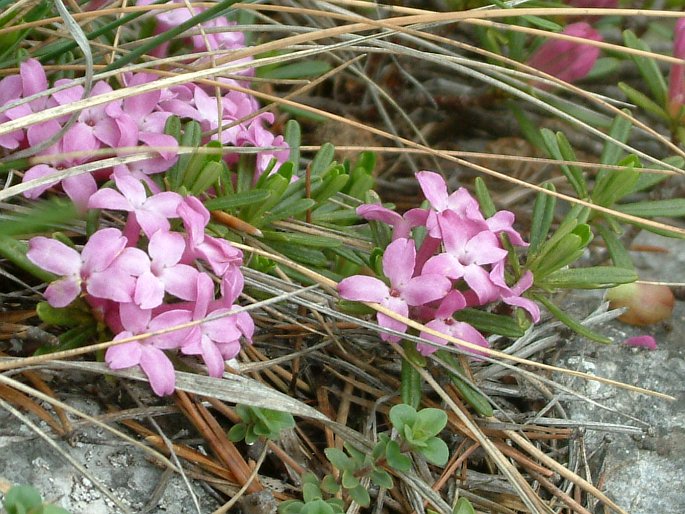Syn.: Daphne abietina (Borbás) Borbás, Daphne cneorum var. abietina Borbás, Rozalia arbuscula (Čelak.) V. A. Richt.
Family: Thymelaeaceae Juss.

Distribution: Endemic to the Western Carpathians, it occurs only in Slovak mountains Muránska planina. This shrub is a relict of the Tertiary Period, and was first described by Czech botanist Ladislav Josef Čelakovský in 1890.
Ecology: It grows on sunny rocky slopes and rocks, on limestone, at elevations from 800 to 1300 m. It blooms from June to July.

Description: Evergreen dwarf shrub, usually decumbent or ascending, 10–35 cm tall, young shoots bright coral-red, older yellowish-brown. Leaves clustered at the ends of the branches, alternate, fleshy, linear or linear-oblong, up to 18 mm long and 5 mm wide, deeply sulcate above and with strongly revolute margins. Flowers hermaphrodite, in terminal clusters, tube 12–20 mm long, lobes ovate, to 8 mm long, fragrant, pink, rarely white, bracts scarious, much shorter than the flowers. The fruit is a drupe, to 5 mm long.
Threat and protection: The Muran Daphne is a protected species by law in Slovakia, also listed in the Habitats Directive (Council Directive 92/43/EEC), and strictly protected by the Berne Convention.
Use: It is an interesting and attractive plant for rock gardens.
Note: The genus Daphne contains about 95 species, which occur in Europe and Asia.




These images were taken in Slovakia, Muránska planina (February 8, 2003 and May 7, 2004).


